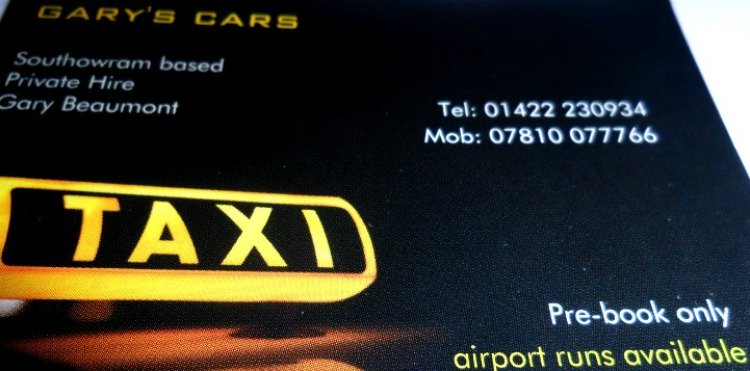Southowram Churches and Chapels
Southowram Churches and Chapels
A History of St Anne Church in Southowram
***************
The first mention of any kind of religious service being held in Southowram is the leave granted in 1442 to John Lacey "Lord" of Southowram Cromwell Bottom to hold services in a private chapel for themselves and their tenants at Cromwell Bottom Hall which included almost everyone who lived in Southowram then.
In 1379 only 20 married and 3 single people paid poll tax there.

Cromwell Bottom Hall area
90 years later the first Chapel of St Anne was built by the Lacey family and their neighbours. This was a "free" chapel, ie free from interference by the Vicar of Halifax - the people who built the chapel and their heirs were the ones who appointed the priests in Southowram.
At the time of the Reformation (1547/49) many "free" chapels were closed and their income confiscated by the crown. The chapel of St Anne was soon reopened and was still in use in 1604 when the owner, John Lacey, in need of money, mortgaged it.
The first definite curate of Southowram was William Ainsworth (1635 -1647).

Was this the original Chapel?
Here is the pen and ink and watercolour view of Briars Chapel, the inscription on back reads "a view of a chapel in the Briars, one of the 12 chapels in the Halifax district'. Signed W. Burgess, October 9th 1788.

The fixed income of the curate at this time was about £5 per year left by Nathaniel Waterhouse in 1642 and 18/- due yearly from the Cock and Bottle. For the cost of his livelihood the curate had to rely on the freewill offerings of the people of Southowram.
The church being in a state of flux, due to the civil war, in 1652 the minister at St Anne's was actually a Quaker, Christopher Taylor. After two other short term incumbents, a Mr Gamaliel Marsden was appointed chaplain but his time here was short. King Charles II had been restored to his throne and under the Act of Uniformity, passed in 1662, non conforming ministers, including Mr Marsden, were ejected and forbidden to preach. After this, the ministers ceased to be appointed by the inhabitants and were nominated by the Vicars of Halifax.
To return to the chapel, it appears that after several years after the building was mortgaged, John Lacey sold the old house at Cromwell bottom and a number of other properties including, presumably, St Anne's chapel. There were several owners of the St Anne's estate following, including the Crowther and Ramsden families.
In 1746 the estate was bought from John Ramsden by William Thopson. He died in 1767 and was succeeded by his nephew Joseph Thomson who was recorded as being one of the trustees of the chapel in 1786.
It appears that the chapel building, by the end of the 18th century, was in rather a poor state and at a meeting in 1796 at the Southowram Poorhouse, i.e. was resolved that the chapel be pulled down and rebuilt in a more convenient position. Many people pledged money but, with the Napoleonic wars intervening with the plans, it was not until 1815 that the old chapel was at last demolished.


The foundation stone for the new building was laid on the 8th July 1816. The cost of the church was £3000. The field in which the church now stands was formerly known named "Little Butt", a butt apparently being a place where villagers used to practice archery in the middle ages.


The new building was finally completed in May 1818 but was not consecrated until October 7th 1819.



The Freeman family were great benefactors of the new church. In 1867 the chancel was extended in the memory of Henry Freeman, and they are thought to have donated the east window.
The organ was a gift of Hanson Freeman c1885 and the pulpit, made of Caen stone, was given at the same time by Mrs Wightman, nee Freeman.
In 1873 gas lighting made evening services possible and the peal of bells was given, in 1896, by Mrs Leppington, also a Freeman.
Information from St Anne's commemorative 175 years Booklet 1819-1994


In 1837 there was another subscription for the building of a church Sunday School in Southowram. The school opened in 1839 as a national school and George Darley Cosbey was the first master. Pupils were taught on a monitor system witht the senior pupils teaching the junior pupils.









St Peters at Brookfoot





United Methodist Free Church, Southowram

At the south side of the junction of Chapel Lane & Church Lane.
In the middle of this picture to the immediate left we can see the building that was another chapel.
Around 1855, the minister at Southowram Wesleyan Chapel forbade preacher Charles Farrar to read from a number of circulars which were upsetting the Methodists at that time. In support, many of his workers withdrew their membership of the Chapel. This led to the establishment of United Methodist Free Church.
The Church opened on 7th October 1859.
The building became unsafe and the Church closed in 1958 when repairs proved too costly. The society rejoined the Wesleyans [1958] to become Southowram Methodists. The building was demolished.
from Calderdale Companion


Methodist Church - Chapel Lane, Southowram



Southowram Wesley Methodist Sunday School
In 1821 on the death of his Uncle, Thomas Drake, a London lawyer, came north to live at Ashday Hall and take over the running of the large Ashday estate.
He soon realised that there was no school in Southowram where children of the poor could get an education, the only school in the village was for “Young Ladies” and run by Miss Patchet at Law Hill House.
In 1824 he offered a piece of land at the junction of Ludhill Lane (now School Lane) and Heald Lane (later known as Milking Hill and now Ashday Lane) to build a “Sunday School for the education and instruction of the children of the poor of all religious sects and denominations”
As Thomas Drake was an Anglican, attending the then comparatively new St Anne’s in the Grove Church, it could be assumed that he offered it to the Anglican Church but they refused it, this is only an assumption as no records show this.
He did however approach the Methodist Society who had been having their meetings at the Chapel at Ings Yates since 1806, the building is still standing in what is now Chapel Lane.

Twelve
members of the Methodist Church became the first trustees when the
indenture was signed on the 26th & 27th October 1824.
The public of Southowram were invited to subscribe to a fund to build the School and it was opened in 1825 at a cost of £209, mainly from donations but also from loans which were paid back over a period of 50 years, not until 1875 was the treasurer able to announce that the school was free of debt.
Thomas Drake donated a small sum of money to the school each year up to his death at the age of 86 in 1862. His legacy however lived on, the building was used as a Sunday School until it was closed and sold in 1992.
During its 167 years, while always having being run by members of the Methodist Church, it never became a Methodist building and was always run as an independent Charity. On the sale of the building the proceeds from the sale were invested and the income used For the benefit of the Southowram Methodist Church and its charitable work, in 2010 the Methodist Society in Southowram combined with Boothtown Methodist Church and Boothtown renamed Boothtown and Southowram Methodist, the Sunday School Trust was then run from the new Church, all trustees are members of the Church.
As the original trust was, for young people of all denominations, the present trustees made the decision to allocate grants to any youth organization in the Halifax area with Southowram & Boothtown taking priority. These grants are still being made and in the past few years help has been given to Boys Brigade, Girls Brigade, Scouts, Southowram Cricket club (junior Team) Beacon Rangers football club, Boothtown Terriers junior rugby and many other worthwhile organisations.
As you can see the work that Thomas Drake and the trustees of the charity started in 1824 is still benefiting the young people in our area to this day.

Memorable Dates in the History of the School
1866 gas lighting fitted
1909 & 1916 Additional land purchased
1925 extension to provide a kitchen and new toilets built at a cost of £600
1932 electric lighting fitted
1940 The building and land was requisitioned by the military
1943 The military relinquished the premises and major refurbishment had to take place
1992 Closed and premised sold.
Most of the information in this article is taken from a booklet written by Willy Firth for the 150 anniversary of the Sunday School in 1975.
My thanks go to Willy for the tremendous research he did.
Phillip Waldron

Saint Michael & All Angels' Church,
Southowram Bank Mission church on Southowram Bank.
Opened 30th April 1887.


Today's view of the building and grounds

A St. Michael's and All Angels plate(picture and plate kindly donated by a friend).
Sion Branch Congregational Sunday School, Bank Top 1888






Bethesda Primitive Methodist Chapel



This was at the top of Beacon Hill Road, just before the Manor House pub






Bethesda's Chapel can be seen in the background
Ashday Lane Methodist Sunday School

As you walk down Ashday Lane this Sunday School is at the top of Milking Hill Lane.

Southowram Bank United Methodist Free Sunday School
also known as Southowram Bank Board School at 79 Southowram Bank

In 1894, there were 113 infants attending [average attendance 84],
although it had accommodation for around 200 pupils.

Cenotaph on Pinnar Lane
If you have enjoyed your visit to this website, please spread the word by clicking the 'like' and 'share' buttons below. Thank you
